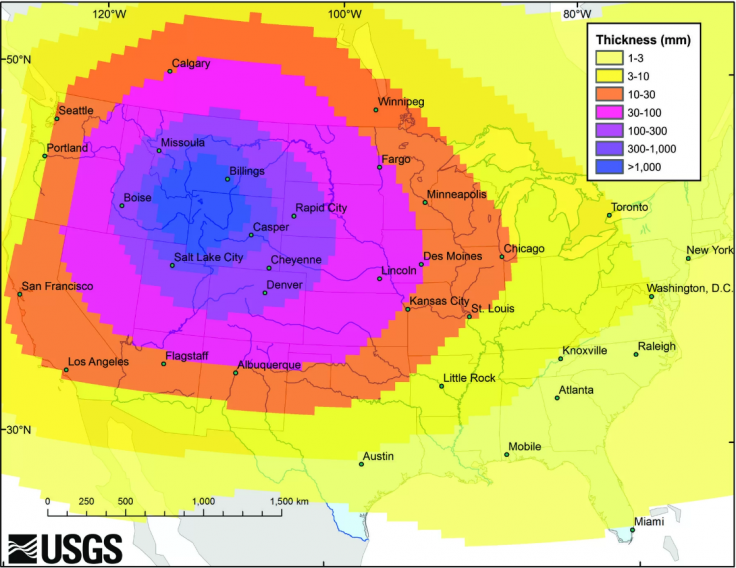Science enthusiasts always seek as a question and that is if the super volcano underneath the Yellowstone National Park erupts, what will happen and when the world should start the countdown for the disaster.
Scientists earlier answered the first query by clarifying that if the volcano erupts then it could spew ash for thousands of miles across US and damage buildings, smothering crops as well as will cause the shutdown of the power plants which will be a huge disaster. Recently, an expert warned that the Yellowstone volcano, one of the largest volcanoes in the world, could erupt at any time and cause catastrophic conditions.
Volcanologist on Yellowstone

Over the past few years, stories about this volcanic eruption and the consequences, surfaced on the internet. Volcanologist from the University of Leicester, Professor Michael Branney told Mirror Online that the volcano will erupt again but since volcanoes don't follow a particular time table for the eruption, it is possible that the eruption is far away. But he mentioned that if Yellowstone erupts, then the consequences will depend on the size of the explosion.
Almost 630000-years-ago, last time Yellowstone volcano exploded which caused a huge disaster but if similar explosion takes place, then it could be catastrophic. While explaining the Yellowstone area, the volcanologist stated that the area in and around the Yellowstone National Park would be buried under hot thick ash from pyroclastic density currents, killing the biota across the region.
In addition, he said that the volcanic ash would spread across Central and Eastern area of US. It could also fallout into the NW Atlantic Ocean which will bury the crops, towns. Such eruption will also make the air unbreathable and block the drainage system which will cause flooding. "In time, biota tends to naturally recover from such environmental catastrophes, but burgeoning human populations and infrastructures would be hugely adversely affected," said the volcanologist.
Earthquakes at Yellowstone National Park

As per Professor Branney, scientists are continuously monitoring Yellowstone volcano, and before such catastrophic eruption, there will be some kind of warning. Recently United States Geological Survey (USGS) stated that the national park is regularly rocked by a succession of earthquakes.
Based on the USGS data on Yellowstone, geologists know that it's seismically active and capable of producing large, devastating earthquakes. In a recent statement, USGS said that due to the frequency of these earthquakes the larger quakes represent one of the greatest geological hazards in the area, much more so than a volcanic eruption.
USGS data also shows that how Yellowstone National Park has some of the highest seismic hazard values in the Intermountain West. They estimated that volcanic zone has an average of about 1,500 to 2,000 earthquakes per year.
In fact, 2019 was the year of diminished seismicity, with 1,217 earthquakes at Yellowstone, below the annual average of 1,500 to 2,500 earthquakes. USGS stated, "For the first time in several years, there was no significant uplift in the Yellowstone area during 2019. The caldera continued to subside, as it has since 2015, and the area around Norris Geyser Basin transitioned from no deformation to subsidence in September 2019."









